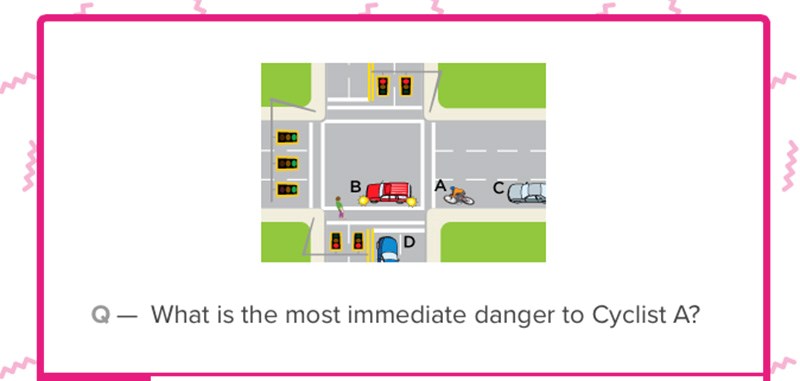ICBC has a new Drive Smart refresher test on its website to give motorists a fun way to determine how much they know — or have forgotten — about the rules of the road and traffic laws since getting their learner’s permit X number of years ago (fill in the X at your peril).
"Why not try it?," suggested my editor. "It might make a good story. Write about all the stuff you’ve forgotten."
So I did.
I got 85%.
Not much story fodder there.
But of the three questions I answered wrong, I take umbrage with one.
The questions on the quiz, it seems, are randomized from a large pool of potential questions so you can take the quiz multiple times and never get the same group of questions.
And I don’t know if ICBC has incorporated some sort of algorithm that was able to tap into my web browser history to determine I’m also a cyclist, but five of my questions had something to do with the rules of the road regarding interactions and encounters with cyclists.
And it’s one of those questions that tripped me up — but I think it’s the question that’s flawed.
The scenario it presented in a diagram is this: A car in the left lane of a three-lane road going one way is stopped midway through an intersection preparing to make a left turn with the green light. The car’s signal indicators are flashing and the driver is waiting for a pedestrian to clear the crosswalk. A cyclist is following the car and is, in turn, being followed by another car.
The question addressed which situation was the most likely to put the cyclist in peril: being hit by a vehicle in the cross street whose driver runs a red light; being clipped by the pedestrian in the crosswalk; being hit by the vehicle following the cyclist; or being hit by the vehicle waiting to make the left turn.
As a cyclist with tens of thousands of kilometres logged on Metro Vancouver’s busy streets, none of the presented perils are very plausible, although they’re not impossible to imagine. Some crazy stuff happens out there.
So I clicked on "getting hit from behind by the following vehicle" — hey, the driver could very well be texting and not notice the car ahead stopped to make a left turn.
But the right answer, according to ICBC, is getting hit by the driver making the turn.
No self-preservation-minded cyclist would — or should — be passing that vehicle on the left side, especially as the diagram doesn’t indicate a cycling lane that would give the cyclist some measure of right-of-way. Nor did the diagram provide any context, such as the left-turning vehicle had just passed the cyclist and suddenly cut back into the lane to make their turn, which would be rude and unsafe.
In such a situation while on my bike, I would just stop and wait for the car to make its turn or, if it was safe, pass on the right of the turning car and then ease back to the left side of the curb lane as I cleared the intersection.
As the driver of that turning vehicle, the last thing I would be looking for on a road without a bike lane is a cyclist coming up on my left when I’ve clearly indicated my intention to turn in that direction as soon as the pedestrian has cleared the crosswalk.
Even if the driver was a jerk who’d just blown past me so he could get to the intersection first, I likely still wouldn’t risk passing him on the left as he awaits to make his turn — I would, however, throw him a dirty look as I passed him on the right. Of course, then I would risk that driver raging on me for questioning his inalienable right to the roadway.
But that wasn’t one of the options I could click.
• If you want to try the test, go here www.icbcdrivesmart.ca.



